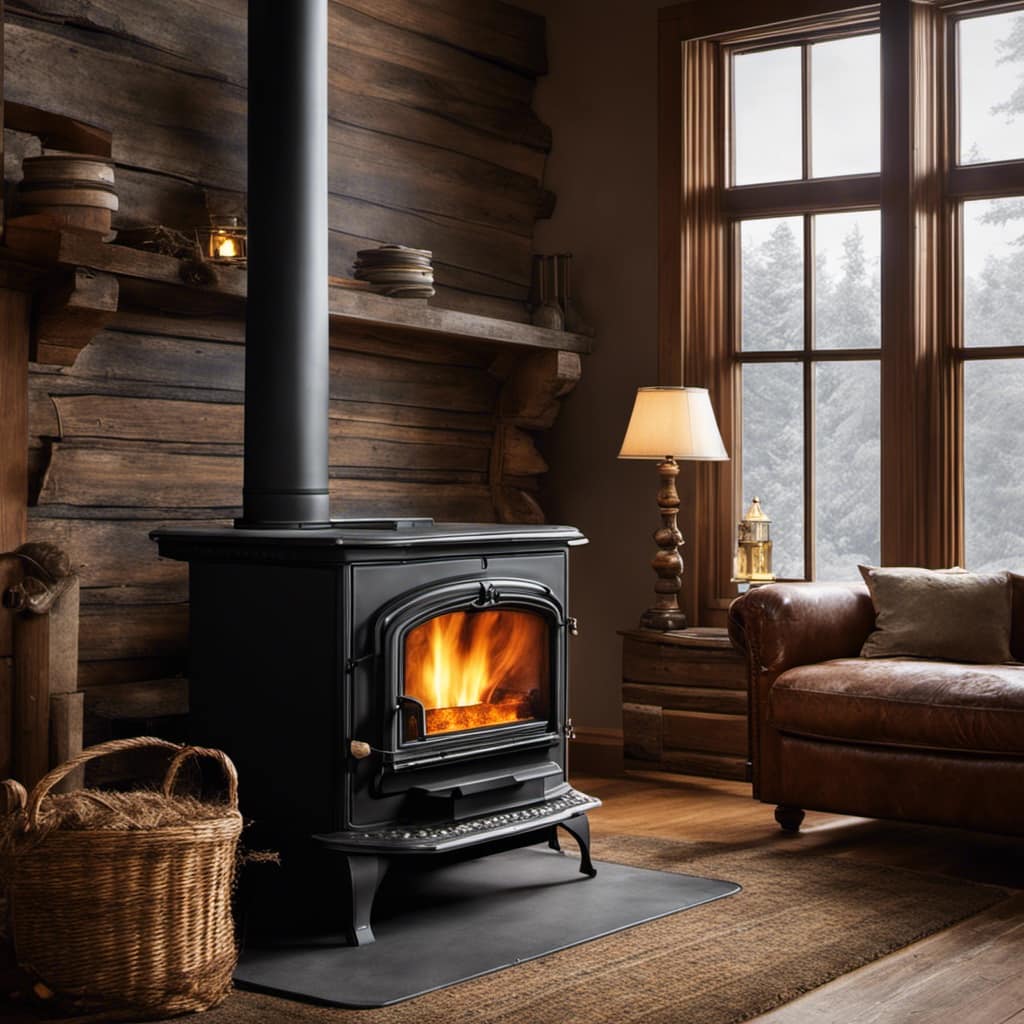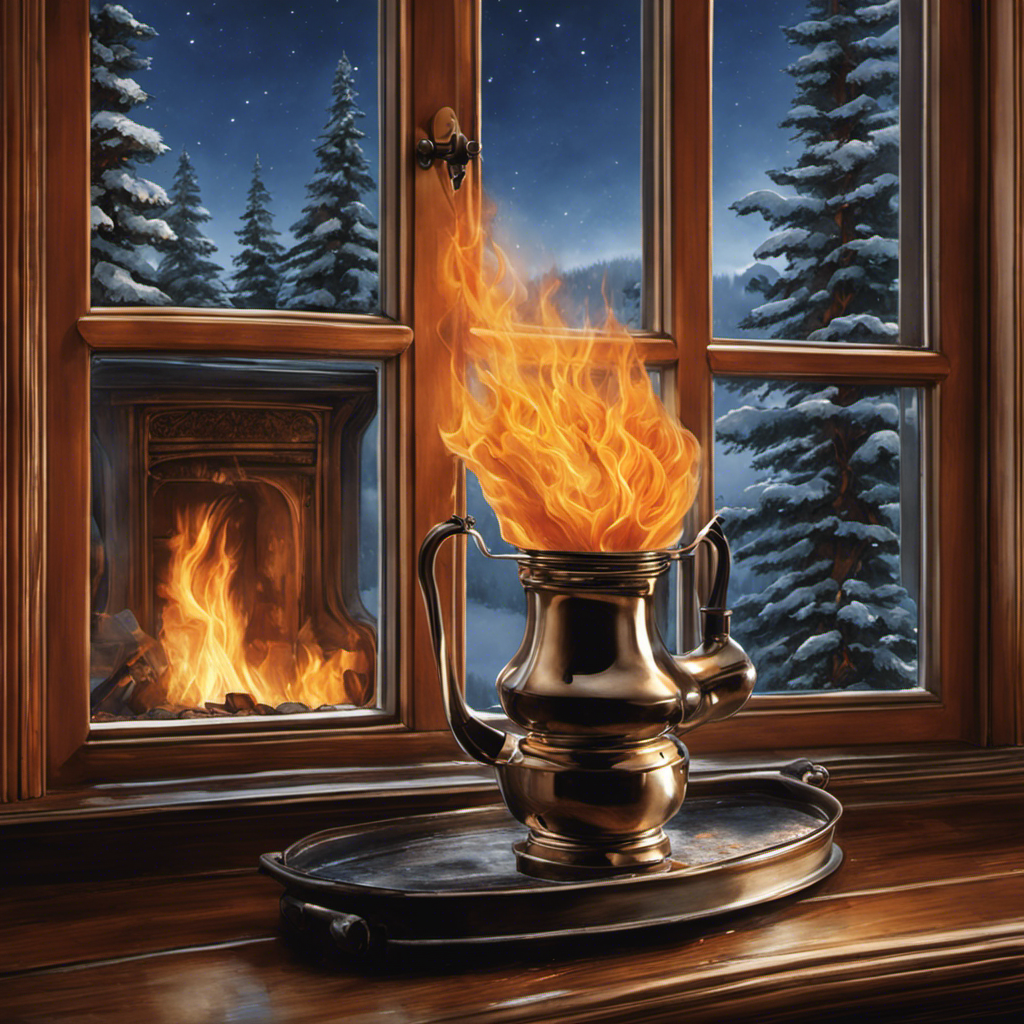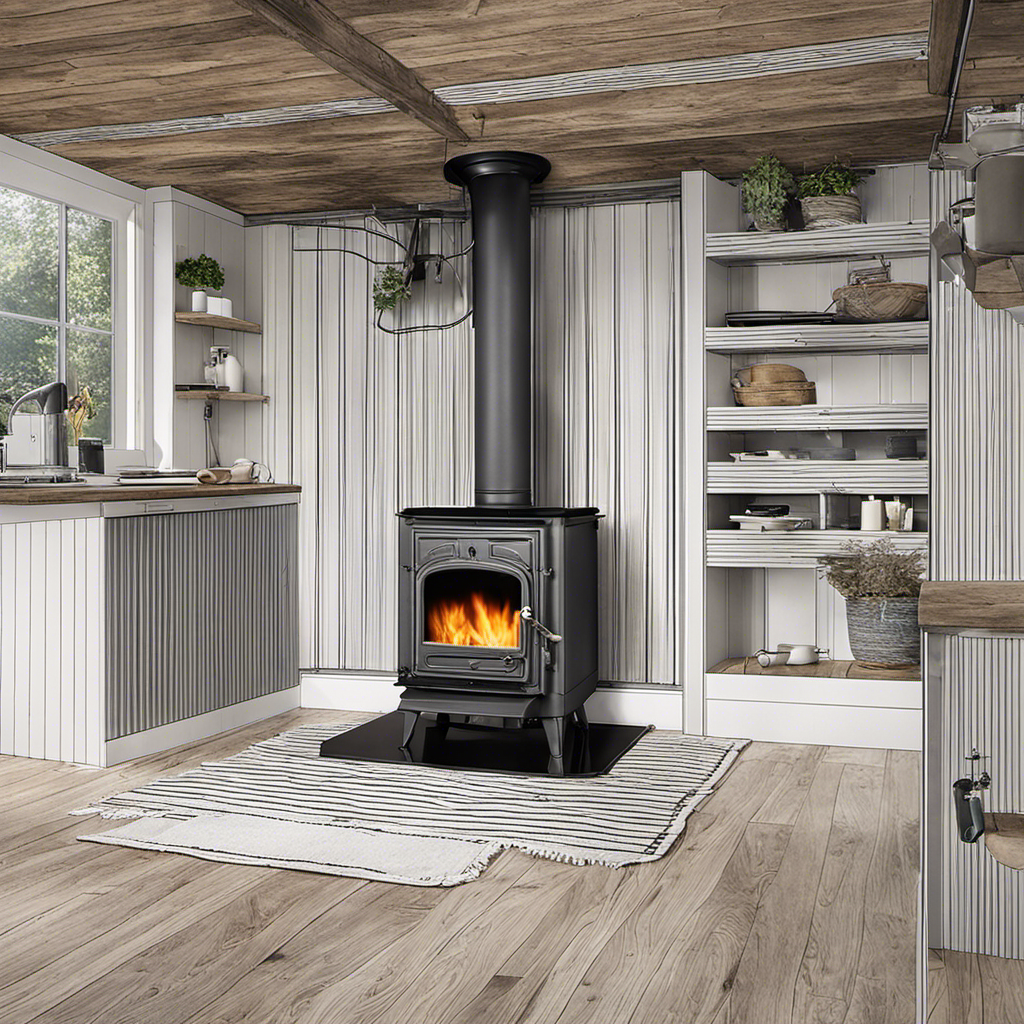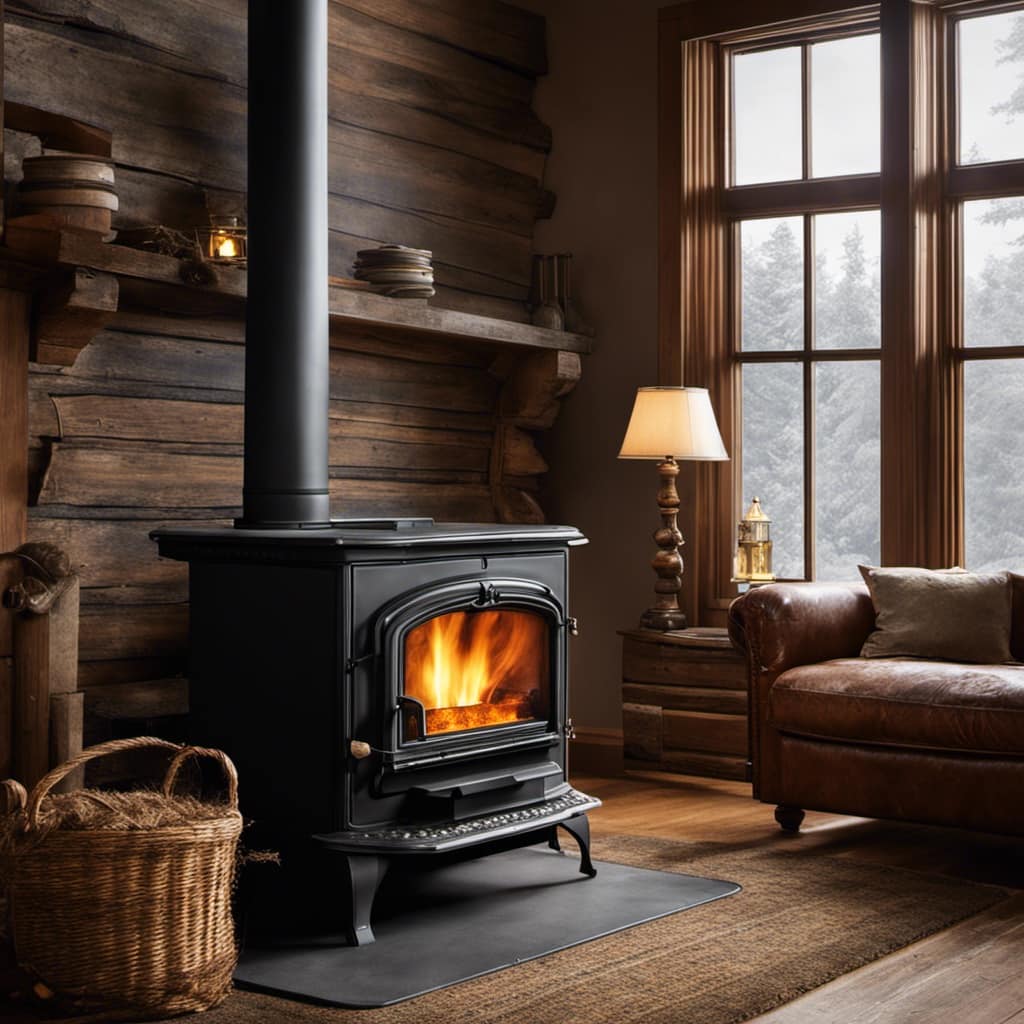
As a homeowner, I thought I knew all the ways to make my house cozy. But I was surprised to discover a whole new level of warmth that I hadn’t experienced yet, all thanks to a wood stove.
In this article, I’ll take you on a journey through the inner workings of a wood stove, revealing the fascinating combustion process, fuel preparation, and heat transfer that make it so efficient.
Get ready to be amazed by the wonders of this humble appliance.
Key Takeaways
- Maintaining the right air-to-fuel ratio is crucial for efficient combustion.
- Proper fuel preparation and loading ensure efficient and safe operation.
- Air control and regulation play a significant role in minimizing environmental impact and improving air quality.
- Heat transfer and distribution are improved through heat conduction, convection currents, and proper maintenance and safety measures.
The Combustion Process
I can feel the warmth radiating from the wood stove as the combustion process occurs. It’s fascinating to understand the technical details behind this process. Combustion begins when the wood is heated to its ignition temperature, which is around 300 degrees Celsius. As the fire ignites, it releases heat energy, carbon dioxide, water vapor, and other byproducts.
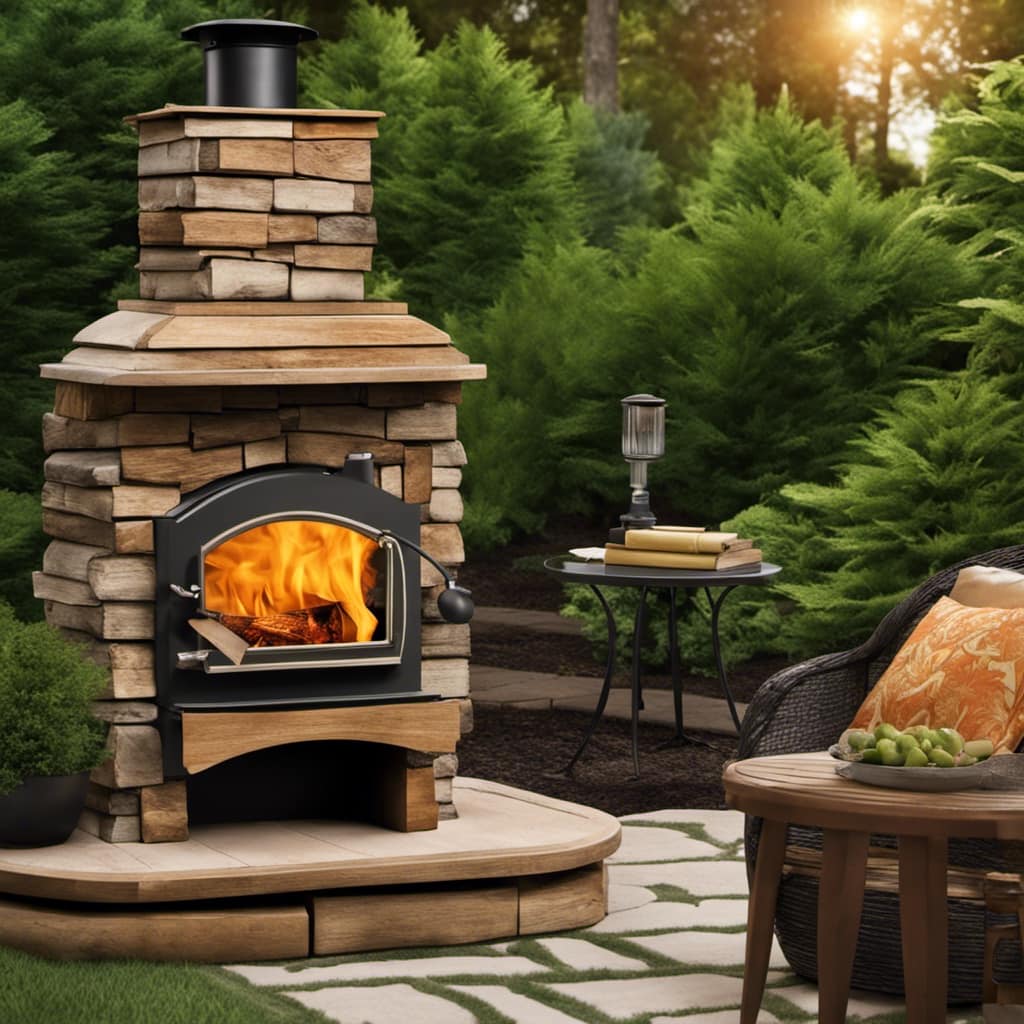
To ensure efficient combustion, it’s essential to maintain the right air-to-fuel ratio. Too much air cools the fire, while too little air results in incomplete combustion. The stove’s design includes adjustable air vents to control the airflow and achieve optimal combustion efficiency.
During the combustion process, flue gas analysis is an important tool to monitor the stove’s performance. By analyzing the composition of the exhaust gases, we can determine the stove’s efficiency, fuel consumption, and potential environmental impact. This analysis measures parameters such as carbon monoxide, oxygen, and particulate matter levels.
Fuel Preparation and Loading
When preparing and loading the fuel for my wood stove, I make sure to stack the logs in a neat and organized manner. Proper fuel preparation and loading is crucial for the efficient and safe operation of a wood stove. It involves storing the fuel correctly and ensuring that it is dry and seasoned. I always store my firewood in a dedicated area away from the house, providing proper ventilation to prevent mold and pests. This ensures that the wood is dry and ready to burn efficiently.
To load the wood stove, I follow a systematic approach. I start by cleaning out any ash or debris from the previous burn. I then arrange the logs in a crisscross pattern, creating a stable base for the fire. This allows for proper airflow and combustion. I make sure not to overload the stove, as overcrowding can hinder the burning process.
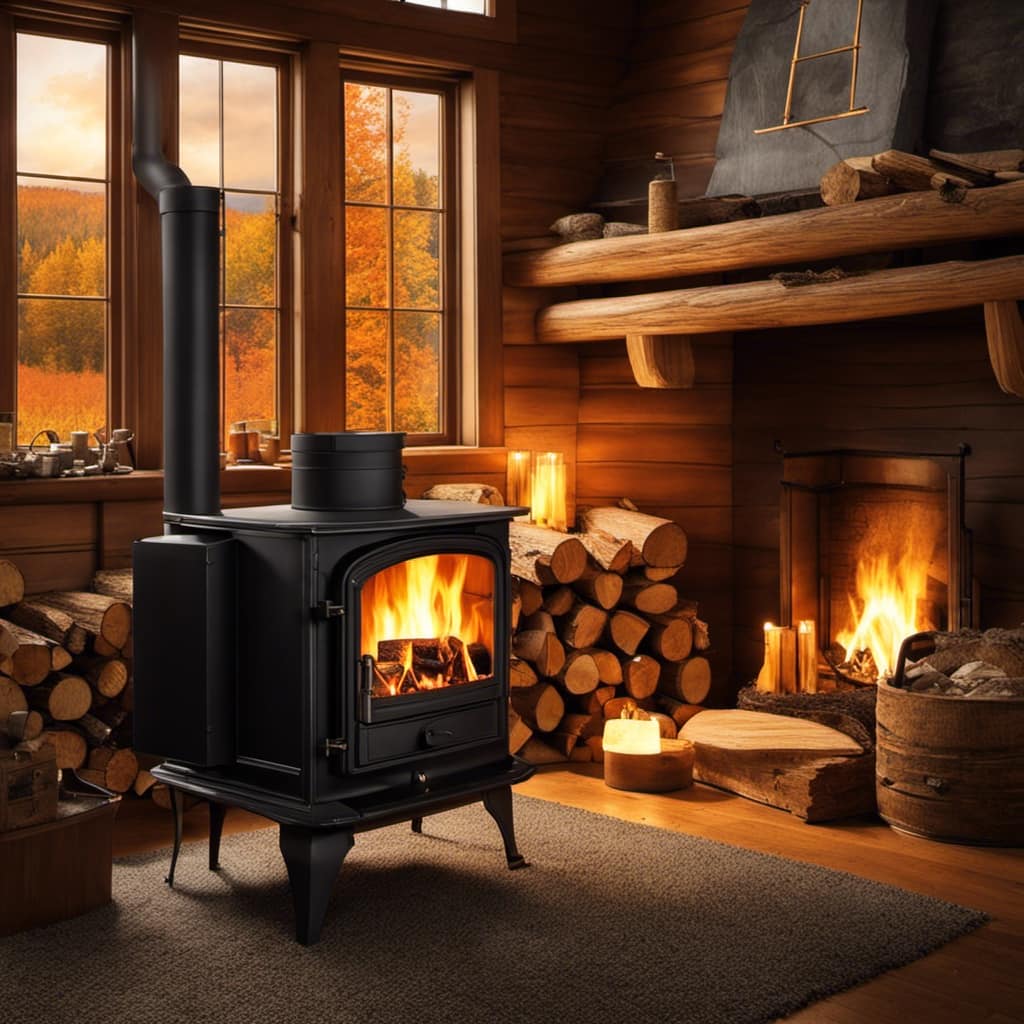
To further engage the audience, here is a table summarizing the key aspects of fuel storage and chimney installation:
| Fuel Storage | Chimney Installation |
|---|---|
| Store wood in a dedicated area away from the house | Hire a professional for chimney installation |
| Ensure proper ventilation to prevent moisture buildup | Choose the right size and type of chimney for your wood stove |
| Keep the wood dry and seasoned for efficient burning | Regularly inspect and clean the chimney to prevent creosote buildup |
| Protect wood from pests and mold | Install a chimney cap to prevent debris and animals from entering |
Air Control and Regulation
The air control and regulation system plays a crucial role in ensuring that the combustion process of my wood stove is controlled and efficient, resulting in minimal environmental impact and improved air quality. Here’s how the system works:
-
Primary Air Control: The primary air control regulates the amount of air entering the firebox. By adjusting this control, I can increase or decrease the intensity of the fire. This allows for better control over the combustion process and reduces the likelihood of excessive smoke emissions.
-
Secondary Air Control: The secondary air control introduces additional air above the fire. This air mixes with the smoke and combustible gases, promoting further combustion and reducing the production of harmful pollutants.
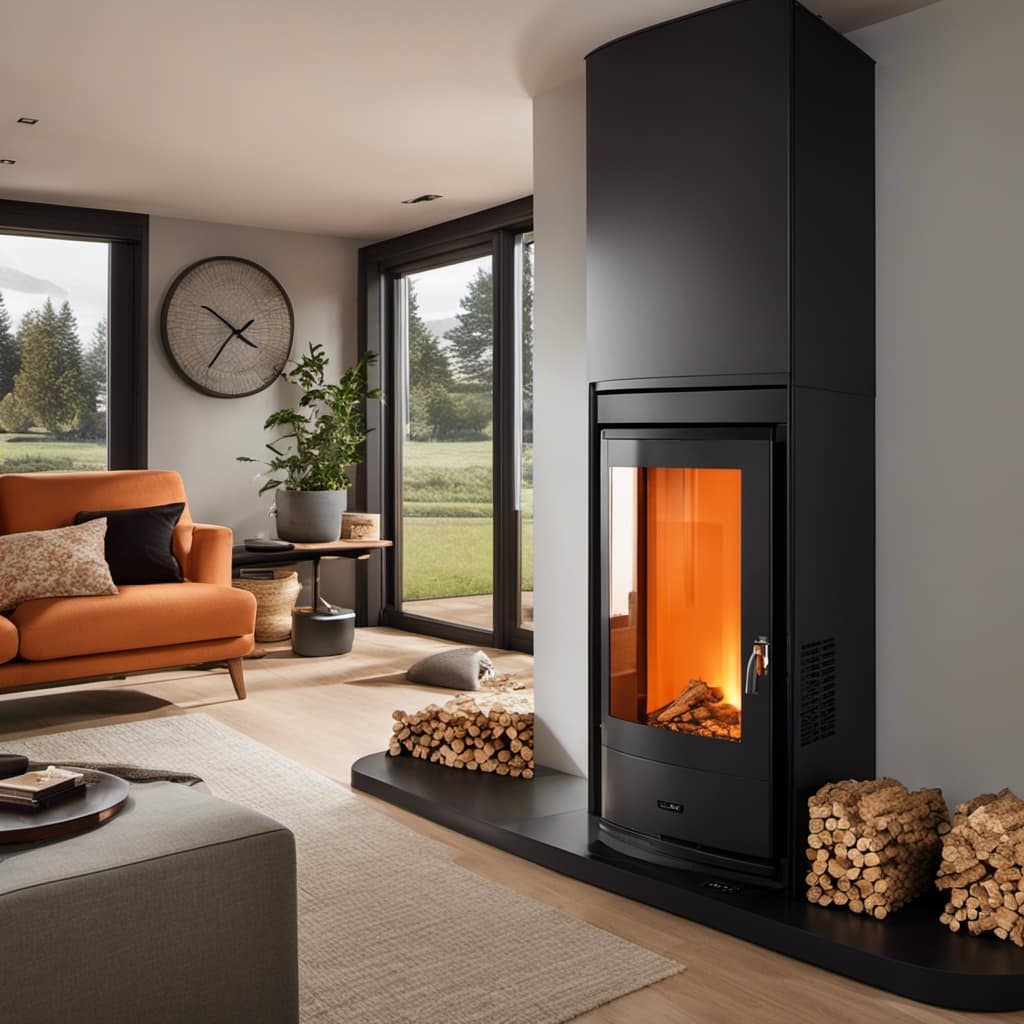
-
Airwash System: The airwash system is designed to keep the glass window of the stove clean. It directs a stream of air across the glass, preventing the formation of soot and ensuring a clear view of the fire.
-
Damper Control: The damper control is used to regulate the draft inside the stove. By adjusting the damper, I can control the flow of smoke and gases, ensuring efficient combustion and reducing the risk of smoke spillage.
Heat Transfer and Distribution
To distribute heat more effectively, I rely on the circulation of air through the vents in my living room. The wood stove in my home utilizes two main methods of heat transfer: heat conduction and heat convection.
Heat conduction occurs when the hot surface of the stove comes into direct contact with the surrounding air molecules. This transfer of heat causes the air molecules to gain energy and rise, creating a flow of warm air. The warm air then moves through the vents, spreading the heat throughout the room.
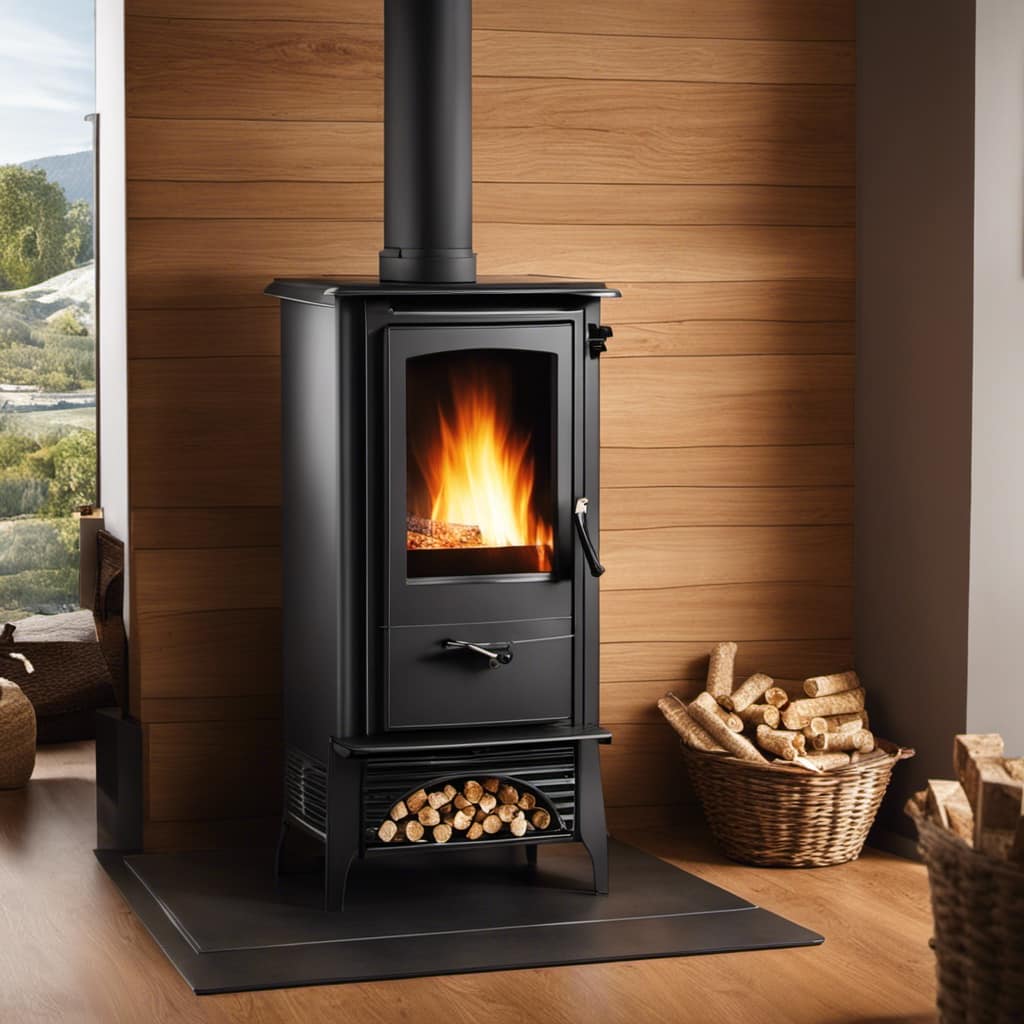
Heat convection, on the other hand, involves the movement of the heated air itself. As the warm air rises, it creates a convection current, drawing in cooler air from the room. This process continues, creating a continuous cycle of warm air rising and cool air being drawn in, resulting in a more even distribution of heat.
To ensure the efficient transfer and distribution of heat, it’s important to regularly clean and maintain the vents and ductwork. This will prevent any blockages or obstructions that may hinder the airflow. Additionally, it’s crucial to follow safety guidelines when operating a wood stove to avoid any accidents or potential fire hazards.
Maintenance and Safety Tips
I make sure to regularly clean and maintain the vents and ductwork to ensure efficient heat distribution and prevent any potential blockages or obstructions.
Here are some maintenance tips and safety precautions I follow:
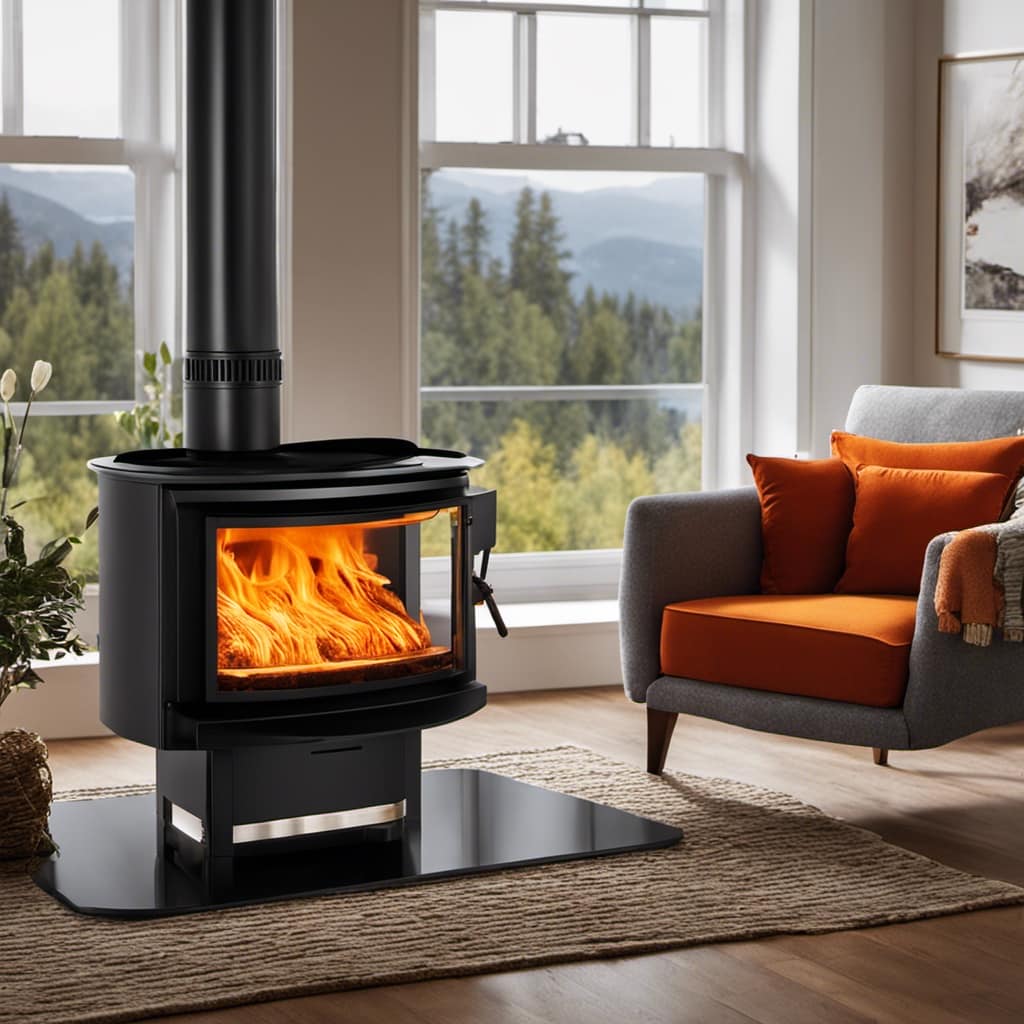
-
Cleaning: I clean the vents and ductwork using a vacuum cleaner with a brush attachment. This helps remove any dust, debris, or cobwebs that may have accumulated over time. It’s important to clean these areas regularly to maintain proper airflow and prevent any potential fire hazards.
-
Inspections: I conduct regular inspections of the vents and ductwork to check for any signs of damage or wear. This includes looking for cracks, loose connections, or rust. If any issues are found, I make sure to repair or replace the affected parts immediately to ensure safe and efficient operation.
-
Chimney Maintenance: I also pay close attention to the chimney, as it plays a vital role in the wood stove’s performance. I schedule professional chimney inspections and cleanings at least once a year to remove creosote buildup and prevent chimney fires. Additionally, I make sure the chimney cap is in good condition to prevent animals or debris from entering.
-
Safety Precautions: Lastly, I always prioritize safety when using a wood stove. I keep flammable objects at a safe distance from the stove and use a fire-resistant hearth rug to prevent any accidental sparks or embers from causing a fire. I also have a carbon monoxide detector installed nearby to ensure early detection of any potential gas leaks.
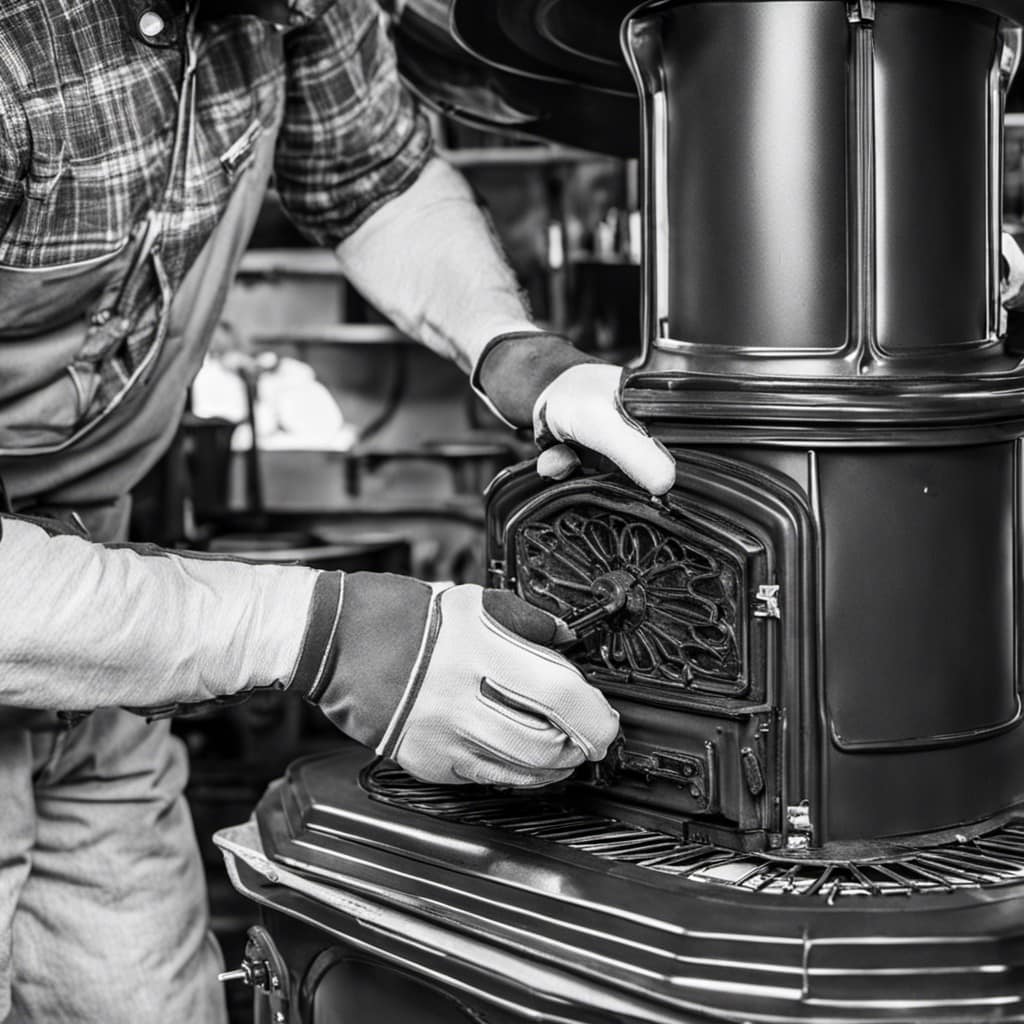
Frequently Asked Questions
What Are the Different Types of Wood Stoves Available in the Market?
Different types of wood stoves available in the market include traditional cast iron stoves and modern, efficient EPA certified stoves.
Cast iron stoves have a classic design and provide a cozy, nostalgic feel.
On the other hand, EPA certified stoves are designed with advanced technology to burn wood more efficiently and reduce emissions.
These stoves are more environmentally friendly and offer higher heat output.
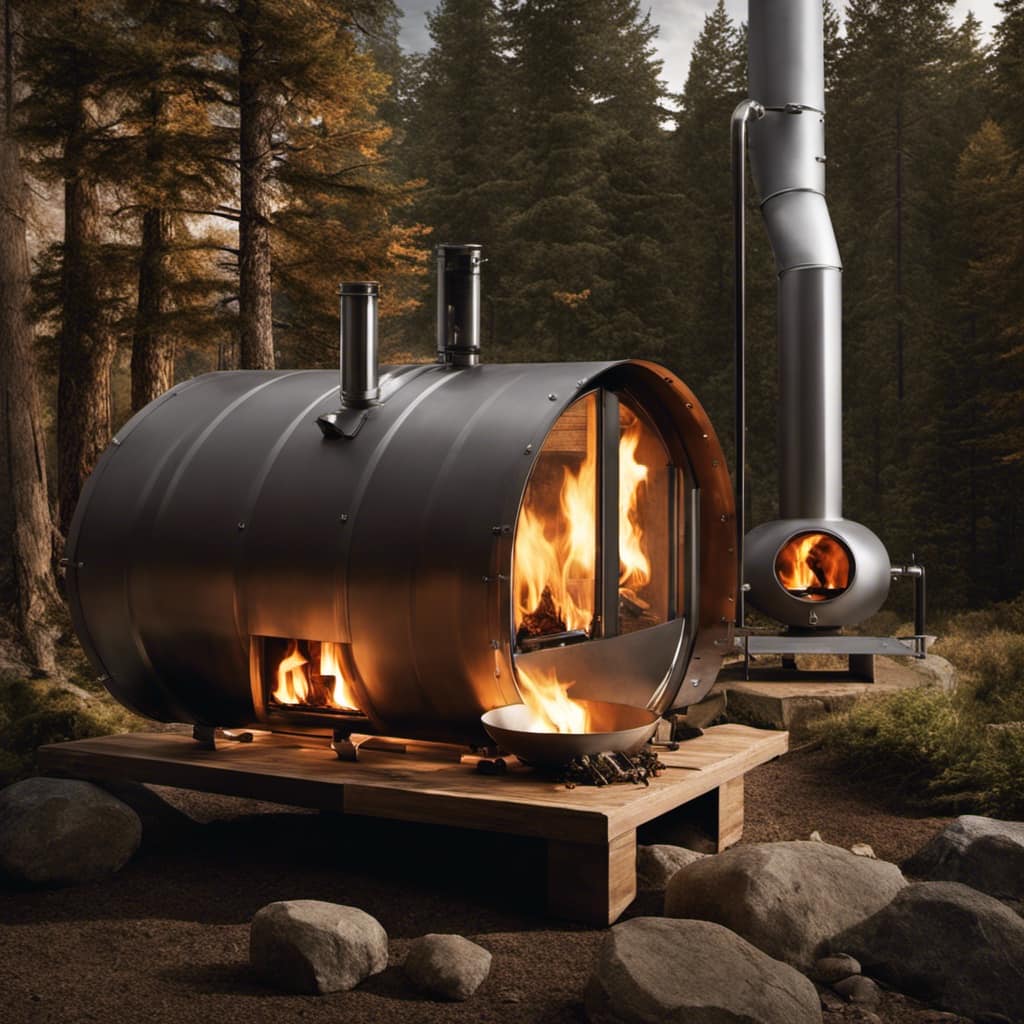
The choice between the two depends on personal preferences and priorities.
How Long Does It Take for a Wood Stove to Heat up a Room?
It typically takes about 30 minutes for a wood stove to heat up a room. This time may vary depending on factors such as the size of the room and the efficiency of the wood stove.
Regular wood stove maintenance is essential to ensure optimal performance and heat distribution.
Using a wood stove has numerous benefits, including cost savings on heating bills and the cozy ambiance it creates in a room.
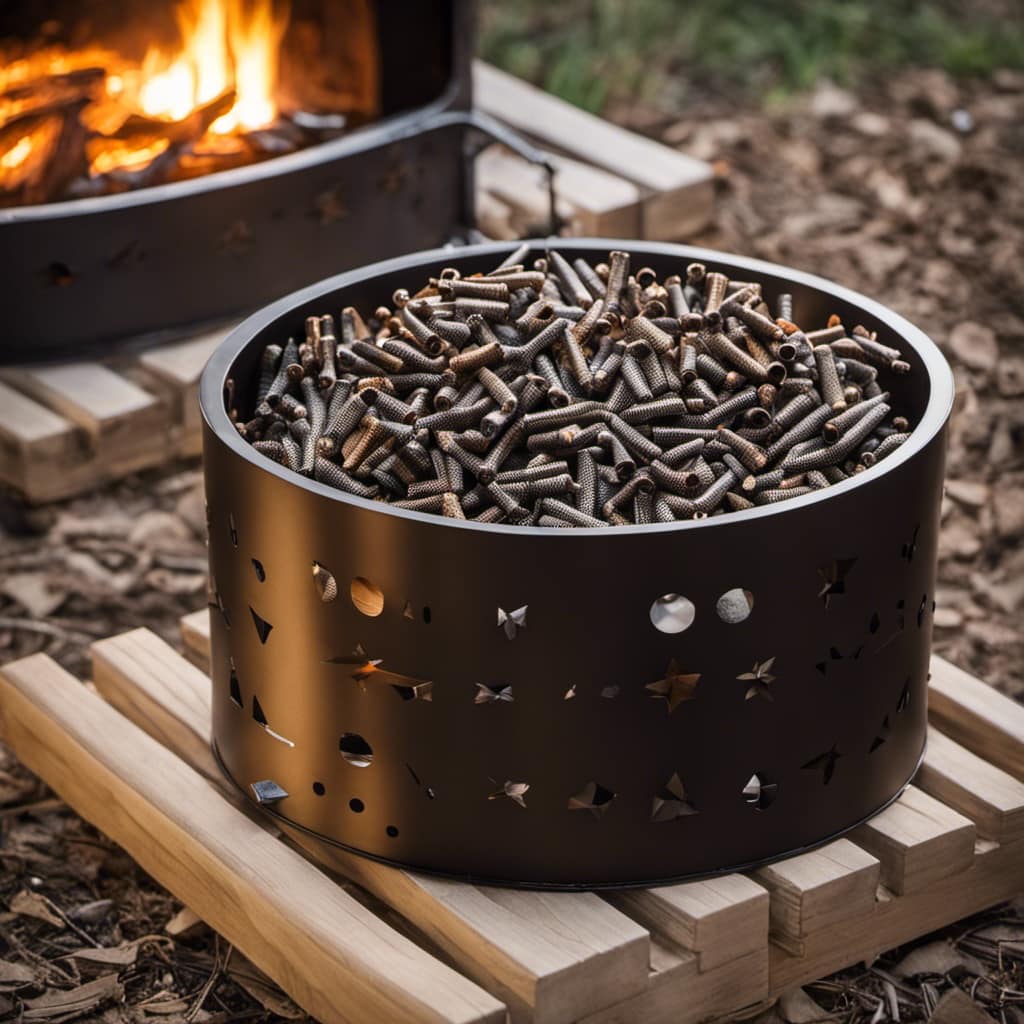
Can a Wood Stove Be Used as the Primary Source of Heating in a Home?
Using a wood stove as the primary heating source in a home has both pros and cons.
On the positive side, wood stoves provide a cozy and rustic atmosphere, and can save money on heating bills.
However, they require constant attention and maintenance, and may not distribute heat evenly throughout the home.
To maximize efficiency, it’s important to properly size the stove for the space, use dry and seasoned firewood, and maintain proper airflow.

Regular cleaning and inspection are also necessary for safe and efficient operation.
Are There Any Safety Regulations or Guidelines to Follow When Using a Wood Stove?
In terms of safety regulations and guidelines, there are several important considerations to keep in mind when using a wood stove.
First and foremost, it’s crucial to adhere to local safety regulations and codes. This may include requirements for proper installation, clearances to combustible materials, and the use of approved venting systems.
Additionally, regular maintenance is essential to ensure safe operation. This includes routine cleaning of the stove, chimney inspections, and checking for any signs of wear or damage.

How Should I Properly Dispose of the Ashes From My Wood Stove?
Proper disposal of wood stove ashes is essential to ensure safety and prevent accidents. Safety regulations dictate that you should never dispose of hot or smoldering ashes, as they can ignite flammable materials. Allow the ashes to cool completely before handling them.
Use a metal container with a tight-fitting lid to store the ashes temporarily. Avoid placing the container near combustible materials.
Once cooled, you can safely dispose of the ashes in a designated area, such as a metal ash bucket or an outdoor fire pit.
Conclusion
So, there you’ve it – the intricate workings of a wood stove, a marvel of engineering and efficiency. It’s truly fascinating how this humble appliance transforms wood into heat through a complex process of combustion, fuel preparation, and air regulation.

Remember, though, that behind the technical jargon and precise mechanisms, there’s a deeper message. In a world where we constantly seek convenience and automation, let’s not overlook the value of simplicity, sustainability, and a connection to nature.
Growing up surrounded by the vast beauty of nature, Sierra was always drawn to the call of the wild. While others sought the comfort of the familiar, she ventured out, embracing the unpredictable and finding stories in the heartbeat of nature.
At the epicenter of every remarkable venture lies a dynamic team—a fusion of diverse talents, visions, and passions. The essence of Best Small Wood Stoves is crafted and refined by such a trio: Sierra, Logan, and Terra. Their collective expertise has transformed the platform into a leading authority on small wood stoves, radiating warmth and knowledge in equal measure.

